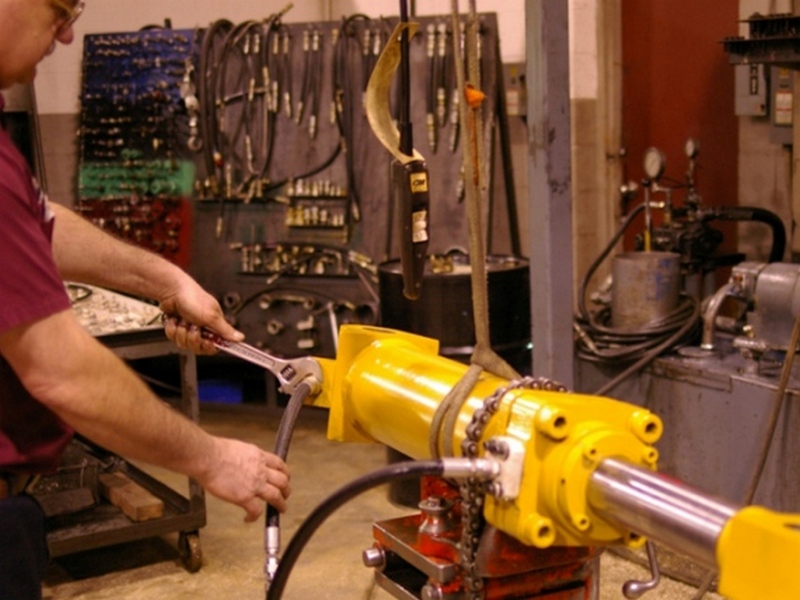Hydraulic Cylinders are used for a variety of applications and have many uses in the field of industrial automation. They are used to perform a number of functions, including pressing or moving heavy objects, holding an object in place, and transferring energy between two points with great accuracy. Agricultural Hydraulic Cylinders consist of three main components: a piston rod, piston head or barrel and a tube body that contains hydraulic fluid under pressure.
The hydraulic cylinder is also known as hydraulic actuators which are controlled by the application of pressure into them by means of an external pump that pushes the fluid through the system.
Single-acting hydraulic cylinder
Single-acting hydraulic cylinders are used to extend or retract a rod. These cylinders apply force in only one direction, so they are often referred to as unidirectional. If you have ever seen a hydraulic jack being used, then you've seen this type of Agricultural Hydraulic Cylinders in action.
The jack is used to lift heavy objects by applying force on the shaft of the jack, which causes it to extend upwards and raise whatever object it is attached to.

In addition to their use in jacks, single-acting cylinders can be found on excavators and on construction sites all over the world. They are also commonly used on farm equipment such as tractors and harvesters because they allow farmers complete control over their equipment while maintaining maximum efficiency throughout every season of farming.
Double-acting hydraulic cylinders
Double-acting hydraulic cylinders enable a greater range of motion than single-acting cylinders. They are capable of lifting and lowering, pushing, and pulling. These cylinders are larger than single-acting cylinders, but they also have more fluid in them. This means that you don’t need as much pressure from your pump to get the job done!
One last thing to note about double-acting hydraulic cylinders: their bore is larger as well! The larger bore allows for a greater amount of force to be transferred through the cylinder with every stroke.
Non-differential cylinder
The non-differential cylinder is a simple hydraulic cylinder that has only one piston rod and no internal valves. It uses fluid to push against the piston and move it in a straight line. This type of hydraulic cylinder is often used for agricultural applications, where power needs vary widely depending on the task at hand.
As an example, consider the lifting of hay bales from a truck onto a wagon—in this case, it's important to be able to stop quickly if something goes wrong so that you don't drop your load onto your feet!
Telescopic
Telescopic hydraulic cylinders are used in telescopic tools. Telescopic cylinders can be used in a range of agricultural, construction and automotive systems. They are also commonly found on cranes, forklifts and lift trucks.
Conclusion
In this article, we have looked at the different types of hydraulic cylinders. We have seen that there are many different types of these cylinders, each with their own benefits and drawbacks.
One type might be perfect for your application, but not another one. However, there is no one size fits all solution when it comes down to choosing which type of hydraulic cylinder best suits your needs and requirements.
Source - http://www.apsense.com/article/what-are-the-different-types-of-hydraulic-cylinders.html

 Log in with Facebook
Log in with Facebook 








